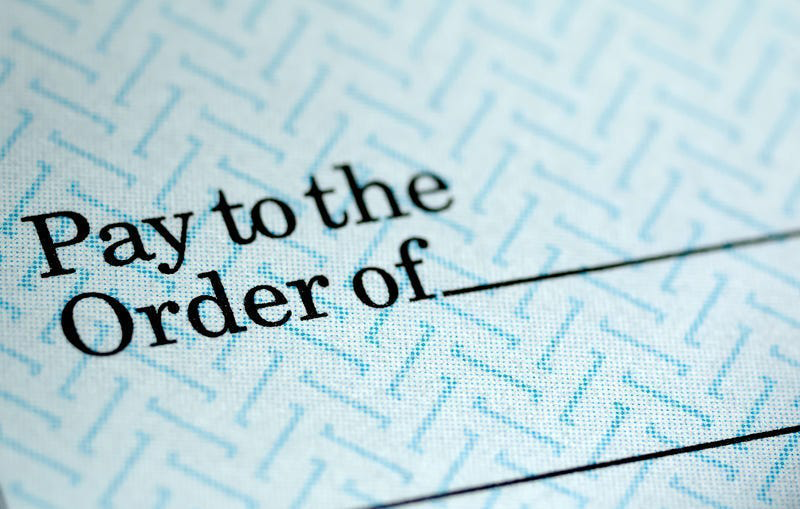Why A Multi-Layered Technology Approach Is Needed For Check Fraud Detection
- There is no single solution for check fraud detection
- Each solution plays a key, integrated role in check fraud detection
- Utilizing complementary technologies provides the most comprehensive check fraud detection strategy
Financial institutions are in the unenviable position of taking on the brunt of check fraud. While, in an ideal world, banks could partner with a single vendor and utilize their solution to detect all check fraud attempts before any funds are lost, this is simply not the case. And, while there are vendors who will claim that their solution can work alone, this is demonstrably NOT the case.
What is true is that artificial intelligence and deep learning technologies are powerful tools for check fraud detection. However, AI and DL are trained for specific purposes and tasks. This means that for check fraud detection, different AI and DL technologies need to be trained to work harmoniously amongst one another -- AKA a multi-layered approach to check fraud detection. Each technology plays a key role, and not utilizing one leaves a gap in a financial institution's capability to detect fraudulent checks.

Let's take a deeper dive into these complementing technologies:
Image Forensic AI
Evolving from legacy image analysis, image forensic AI takes a forensic document examination approach to analyzing the images of deposited checks. This technology examines all check fields, identifying indicators that a check might be a counterfeit, forged, or altered. This is done through multiple analyzers trained for specific tasks, including:
- Check Stock Validation (CSV-AI): Analyzes the attributes, layout, and relative coordinates and dimensions of select preprinted fields as “anchor points” on the check.
- Automated Signature Verification (ASV-AI): Identifies signature variations by comparing the signer on the check presented for payment against the signature on cleared checks drawn on the same account.
- Writer Verification (WV-AI): Handwriting analysis to identify difference in writing styles.
- Alteration Detection: Check style analysis and CAR/LAR discrepancy.

By analyzing physical attributes of each check, FIs are able to increase detection of fraudulent checks.
Behavioral Analytics
Evolving from legacy transactional analytics, behavioral analytics utilize AI and DL models to scrutinize the transactions of an account. This enables FIs to identify transactions that are not typical of account holder behaviors. If a check is cashed for a high amount, or to a new payee, FIs can put a hold on this payment and alert their account holder of the transaction. It's also effective for stolen checks, where they can identify duplicates or serial-out-of-range check numbers.
Additionally, behavioral analytics is a strong technology for new accounts opened online -- a tool fraudsters utilize for their "drop accounts." If a new account is seeing a suspicious amount of deposited checks, the account can be placed on hold and the funds frozen.
Consortium Data
Consortiums leverage data from multiple FIs to share amongst the participating members. When a check is deposited, the new data is surveyed against the consortium data to see if the check is legitimate. This is a powerful tool as it can determine whether that specific check had already been deposited (via the check number), if the account is closed, and other possible issues with the check.
Recently, FIs have embraced consortiums and a willingness to share their data. The key to a successful consortium will always be having more participating members to encompass as much data as possible for verification.
Payee Positive Pay

Payee positive pay is a solution offered by FIs to businesses for check fraud detection. At the end of the day, the business submits an issuer file to their FI to which they compare check transactions. This enables financial institutions to ensure that the payment was made to the correct payee and for the right amount.
Payee positive pay solutions have seen an increase in effectiveness with the introduction AI and DL recognition technology with free-read capabilities, enabling banks to more accurately read the payee field whether it's computer printed or handwritten.
Data Analytics
Data analytics powered by AI and DL technologies are enabling FIs to take a holistic view of fraud. By leveraging all the data available from all payment channels, they are able to identify emerging fraud trends, and, in turn, take proactive steps to stop fraudulent activity.
Final Verdict -- All or Nothing?
The question many FIs may be asking themselves is: "Do we need to source individual vendors for each technology?" The answer is no. Financial institutions typically already contract with a fraud review platform. Many of these platforms are already utilizing technologies that FIs can leverage.
FIs are able to integrate new technologies to the platform through APIs. For instance, OrboGraph's Anywhere Fraud with OrbNet Forensic AI works with fraud review platforms to ingest our fraud results, enabling banks to leverage our technology and review the results on the fraud platform they are currently utilizing. This provides FIs with a single platform to review fraudulent activities from multiple sources.

As check fraud continues to rise, it's critical that FIs invest in complementing technologies for a multi-layered check fraud detection approach.